Exercise Overview
Plank is one of the best core exercises. You hold your body in a straight line over a period of time, the longer is the better. It sounds simple, but it is not that easy. The plank and all its variations will work your core muscles (the rectus abdominals and the obliques, as well as stabilizing deep core muscles) isometrically.It is a foundation of all good bodyweight programs, and a great introduction to static, isometric work.
And like almost calisthenics exercises, it requires no equipment and can be performed just about anywhere (well, use your judgment).
 |
| Plank muscle worked |
The progression
Choose one of the following variations as a starting point and hold the position for 30 seconds. Gradually build up to a hold of one minute over time. When you can do the exercise for one minute, move on to the next variation in the progression.
1. Kneeling plank.
Performed on your knees, with thighs and spine in line.
2. Kneeling side plank.
Bend your legs at the knee at a right angle and keep your thighs and torso in line. Your forearm, elbow, knee and lower leg are your points of contact with the ground.
3. Plank.
With your weight resting on your toes and forearms, keep your core muscles tight and remember to breathe throughout the duration of the exercise.
4. Side plank.
Can be performed with your upper arm at your side, or in the air. Aim for 30 seconds on each side, with a quick transition between the two.
5. Decline plank.
Performed with feet elevated on a bench. Keep a straight back and remember to breathe throughout the exercise.
6. Leg lift plank.
From the plank position, lift a leg straight behind you, parallel with the floor. Hold one side for up to 30 seconds; then change legs for the remaining 30s.
7. Arm and leg lift plank.
From the plank position, lift a leg up and its opposite arm. Keep a horizontal back throughout the exercise. Hold one side for up to 30s; then switch arms and legs for the remaining 30s.
8. Wall plank.
Performed with your feet flat against a wall. Prop yourself hard on your forearms and dig the soles of your feet hard into the wall.
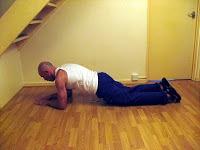
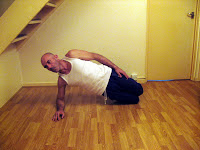

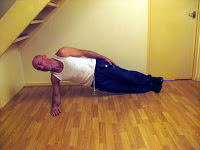
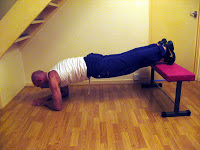

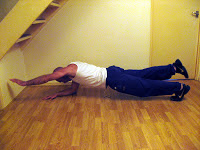
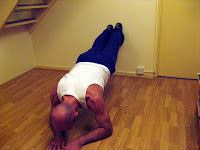
Comments
Post a Comment